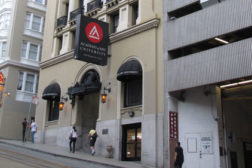Home » Radio-Frequency IDentification (RFID)
Articles Tagged with ''Radio-Frequency IDentification (RFID)''
How RFID and NFC Technology Enhances the Enterprise
RFID-based access control can build those consumer-friendly functions for enterprises while still streamlining the business for smoother operations and security.
January 6, 2014
Migrating from Keys: It’s All in the Journey
When “Do Not Duplicate” is not working as a key control strategy, perhaps it’s time to consider switching to electronic access control solutions.
November 5, 2013
Sign-up to receive top management & result-driven techniques in the industry.
Join over 20,000+ industry leaders who receive our premium content.
SIGN UP TODAY!Copyright ©2025. All Rights Reserved BNP Media.
Design, CMS, Hosting & Web Development :: ePublishing








